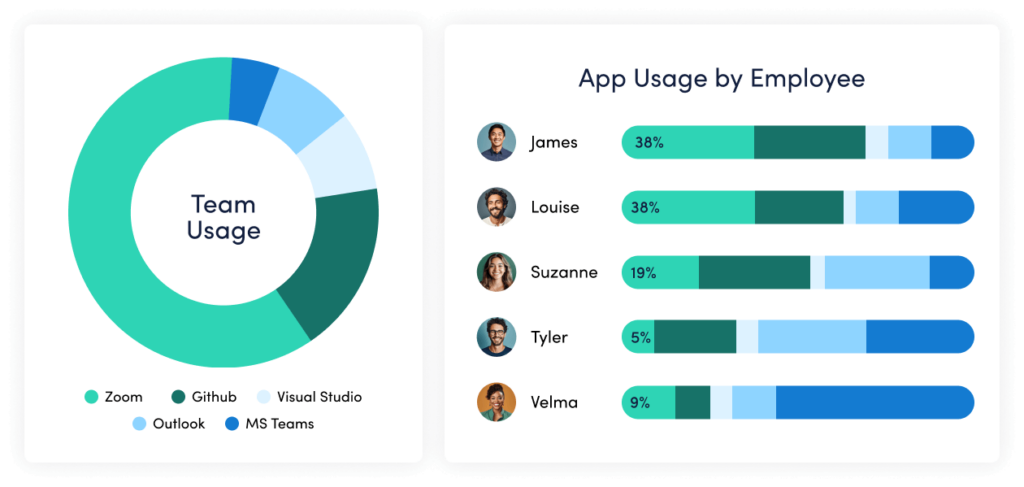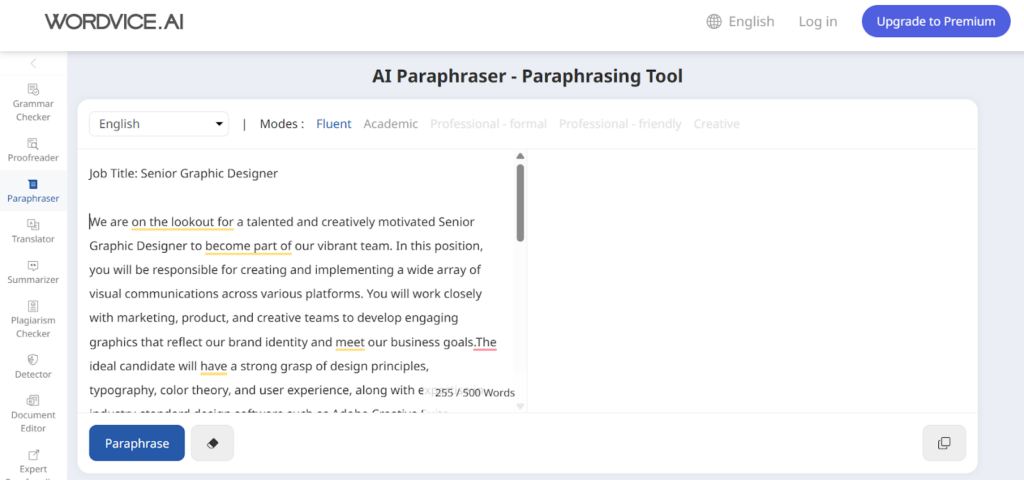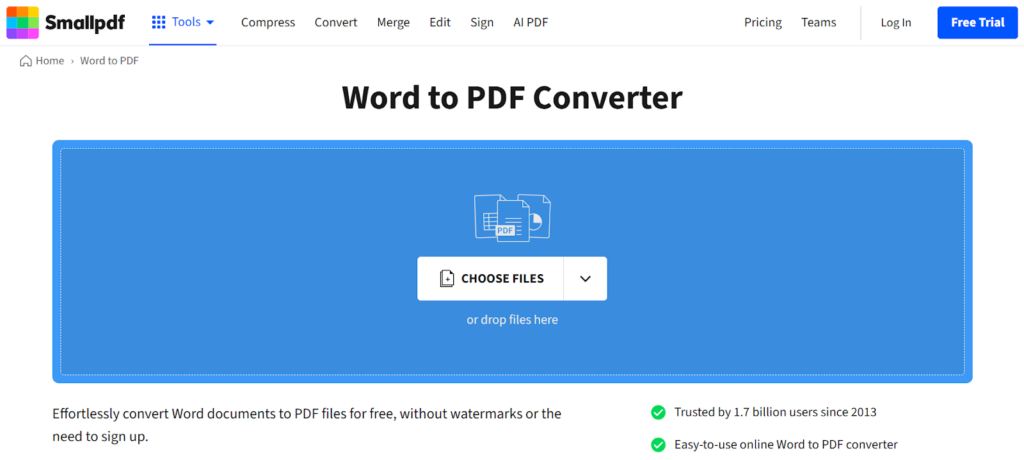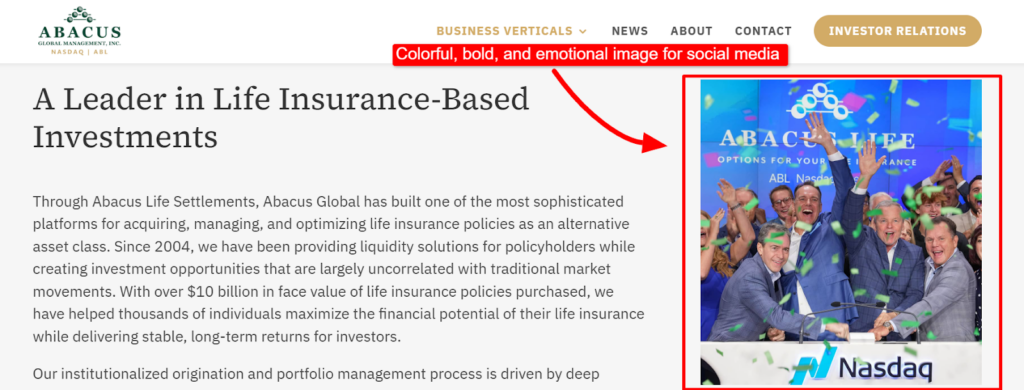- How to Use Analytics to Improve Your Job Description Performance - December 2, 2025
- 9 Tools That Help You Write Job Ads Candidates Actually Read - October 17, 2025
- How to Optimize Job Descriptions for Social Media Success - September 15, 2025
Many hiring teams treat social media like a copy-paste dumping ground.
But job descriptions written for your website or applicant tracking system (ATS) rarely perform well on platforms like LinkedIn, Instagram, or TikTok. (The format is different. The audience is different. And the attention span varies on each one.)
If you’re sharing job content without adjusting it for the platform it’s on, it may fall on deaf ears.
Let’s take a closer look at how to write job descriptions that stand out in social media news feeds. We’ll share why this matters and how to make your openings sound more engaging — and shareable — without starting from scratch each time.
Why Is It Important To Optimize Job Postings on Social Media?
Some job seekers aren’t refreshing job boards; instead, they’re scrolling through social feeds.
This means your open roles need to stand out where your ideal candidates are already spending their time. When you optimize job postings for social media, you encourage more visibility, attract more aligned candidates, and make it easier for people to share your roles with their networks.
Optimizing your posts also helps reinforce your employer brand and build trust with passive candidates who may not be actively looking. (But would apply if the right opportunity caught their eye.)
If you’ve posted elsewhere but haven’t tried social media yet, this article’s for you.
How To Optimize Job Descriptions To Attract More Aligned Candidates on Social Media
Here’s how to create job descriptions that draw in the right candidates for your organization:
Step 1: Uncover What the Role Actually Looks Like Day-To-Day
You might think you know what a role involves. But daily work often looks very different in practice.
To write better job descriptions, start by talking directly to the people in that role (or adjacent roles). Also, speak with their managers or department heads to get a fuller picture of responsibilities and success measures.
➜ Ask what tasks take up the most time, what tools they use, and what success looks like week to week.
You can also use insights from employee monitoring software to identify real work patterns. Look for long-term trends, task breakdowns, and common tools employees use.

When candidates see themselves in the description, they’re far more likely to apply.
Step 2: Create a Social Media Job Description Template
Use a job description template for each social media channel you plan on posting on. Include information about required visuals, hashtags, and other details that are relevant for each social media platform.
To start, create a general social media job template and then tweak it for each channel.
Here’s a six-part framework with examples for inspiration:
General social media job description template
- Greeting. “Hi community!”
- Conversational line that’s enthusiastic about the posting. “We’re excited to announce that we’re hiring a new social media specialist. 🎉”
- What the job entails. “If you know someone who eyes social media trends on the daily, has experience using social media management tools, and has a heart for community management, send them our way!”
- When the start date will be. “The role will begin on August 15.”
- Starting salary and fun perks. “Pay starts at $85K a year plus very generous bonuses. Includes flexible hours, wellness days, and a home office stipend, too.”
- How to apply. “Tag a friend or apply at [yourwebsite.com/jobs] — we’d love to hear from you!”
If you’re having trouble writing a concise job description, try using an AI paraphrase tool. It’ll help you paraphrase what you’ve written so it’s more digestible.
For instance, if you’re posting about a graphic design position, you might paste the following into the tool:

(Just make sure to edit the final output so it still sounds like your usual brand voice.)
Tweak your job description visuals, length, and formatting for each platform, but keep the core message clear and engaging.
Look below for some practical examples.
How to tweak this template for different platforms
- LinkedIn: Add a branded graphic with the job title and company logo. Use two to three short paragraphs instead of one big block. Include a link to apply and encourage resharing.
- Include a downloadable PDF that provides further details about job perks and your company culture. If you write this in Google Docs, head to “File > “Download” > “PDF Document (.pdf)”. If you write it in Microsoft Word, use a Word-to-PDF converter, like this one:

- Instagram: Turn the six-part framework into a carousel post with one slide per bullet. Use bright visuals, brand colors, and job title graphics. Add relevant hashtags, such as #Hiring or #SocialMediaJobs.
- X: Break the message into a short thread (one post per key point). Use an eye-catching image or GIF in the first post. End with a call to action and the apply link.
- Facebook: Maintain a casual and community-focused tone. Use the six-part framework as a single post, include an image, and ask followers to tag a friend who might be a fit.
- TikTok: Create a short video highlighting three things (the job title, one fun perk, and how to apply). Use trending audio and text overlays with the job info.
As far as visuals go, use an easy design tool like Canva and edit the premade templates it offers. (Search for a Canva template for the specific social media channel you’re posting on so the size is perfect.)
You can also pull relevant images from your website and use Canva’s magic resizer tool so they look good on each platform.
When selecting images for your website, choose ones that reflect your organization as a great place to work. Look for colorful visuals, bold contrasts, and human emotion to connect more deeply with potential candidates.
Here’s a great example of an image Abacus Global could pull from its site when posting life insurance investment-related jobs:

Before publishing your job postings, make sure to avoid bias in your language. Let’s get to that next.
Step 3: Avoid Bias When Writing Your Job Descriptions
Did you know there are over 12 types of bias categories your job description could fall under if you’re not careful with language?
Job descriptions impact who applies to your job postings and directly affect the diversity of your workforce. If inclusive job postings are important to you, make sure your descriptions don’t include biases.
Some of the most common ones that tend to show up in postings include:
Gender Bias
Example: “We’re looking for a dominant leader who can crush aggressive sales goals.”
Issue: Terms like “dominant” and “aggressive” skew masculine and may discourage women or nonbinary individuals from applying.
Age Bias
Example: “Seeking a young, energetic digital native to join our fast-paced team.”
Issue: Implies a preference for younger candidates and excludes experienced professionals.
Racial Bias
Example: “Must be a native English speaker.”
Issue: This may unintentionally exclude non-native speakers who are fluent and capable, and often affects applicants from diverse racial backgrounds. (If it’s absolutely necessary that they’re a native speaker, explain why.)
Disability Bias
Example: “Must be able to lift 30 lbs and walk around the office regularly.”
Issue: Unnecessary physical requirements can exclude qualified candidates with disabilities, especially if not essential to the role. *Delivery drivers and couriers may have more specific weight-lifting requirements due to the nature of their work.
LGBTQ+ Bias
Example: “We offer great maternity leave benefits for new moms.”
Issue: Gendered language and assumptions about family structures may alienate LGBTQ+ candidates. “Parental leave” is a more inclusive term.
Former Felons Bias
Example: “No candidates with a criminal history will be considered.”
Issue: Blanket exclusion can unfairly disqualify individuals who have successfully rehabilitated and possess valuable skills.
Elitism Bias
Example: “Must have a degree from a top-tier university.”
Issue: Suggests a preference for candidates from prestigious schools. This may exclude people with equivalent experience or education from other institutions.
Mental Health Bias
Example: “We need someone who can handle high-stress environments without missing a beat.”
Issue: May deter candidates with anxiety or other mental health conditions. (And implies they’re less capable.)
Religion Bias
Example: “Must be available to work Sundays.”
Issue: Could exclude candidates who observe religious practices on Sundays or other specific days unless flexibility is offered.
Need help flagging these? Our software finds and removes 12+ types of bias in job descriptions, so your postings feel welcoming to everyone, especially people from underrepresented groups.

Request a demo now to learn more.
Step 4: Track Engagement and Answer Candidate Questions in Real Time
Once your job post is live on social media, your job isn’t done. Now it’s time to listen.
Set up tracking and analytics tools to see who’s interacting with your job descriptions (and how).
UTM links and link shorteners, such as Bitly, can show you how many clicks your post is receiving. You can also use platform analytics to track likes, shares, saves, and comments. This tells you what resonates (and what doesn’t).
➜ If you’re not seeing much traction, consider testing a new headline, switching up the image, or adding a perk front and center.
Take it a step further with social listening tools like Brand24, Sprout Social, or Hootsuite. They’ll help you spot people talking about your company or sharing your job posts, even if they don’t tag you.
Why does this matter?
Because some candidates have questions before they apply. Others may also want to tag a friend or share your post in a career advice thread. When you respond quickly and helpfully, it shows you care. This one tip can turn a curious scroll into a serious application.
Also, make sure your application process actually works:
- Test your apply link on each platform.
- Track the number of people who start the application and the number who complete it.
- If there’s a big drop-off, the form might be too long or not mobile-friendly.
After learning what works best, update your process so it’s easy, friendly, and fast across all of the social media channels you’re posting on.
Step 5: Repost Strategically and Repurpose Often
Posting once isn’t enough. Most people won’t see your job the first time around (or they’ll scroll past it and forget). To attract more aligned candidates, develop a social media strategy that focuses on when and how you repost and repurpose your content.
We recommend:
- Reposting the same role two to three times per week, especially on fast-moving platforms like X and Instagram Stories. Revamp the opening line, image, or hook to make it feel fresh. But keep the link consistent to track performance.
- Pinning or highlighting the post on platforms that allow it (e.g., pin it to the top of your LinkedIn or X feed, or add it to a “We’re Hiring” IG Story Highlight or board on Pinterest). This makes it easy for profile visitors to find your active job openings.
- Turning one post into multiple content formats. For example:
- Re-share a carousel on Instagram as individual slides on Pinterest.
- Turn a LinkedIn post into a short video on TikTok.
- Turn a quick FAQ reply into a full follow-up post.
- Using employee voices. Ask team members to share the role with a personal caption about what they love about working at your company. Their authentic language makes the opportunity feel more credible and human. ♥️
- Leverage your email newsletter and Slack communities. Reshare the job in communities where your ideal candidates already hang out, like via Slack or email.
You can also partner with relevant content creators and affiliates in your industry to help spread the word. (This is also a great way to collect user-generated content that you can later include in your postings to build more trust with potential leads.)
➜ Pro-Tip: Make repurposing part of your usual job posting workflow. Add it to your content calendar and make sure your marketers understand what you expect. This’ll help each post go further so you’re not starting from scratch every time.
Wrap Up
Social media gives your job descriptions more reach, but only if you optimize them to connect with the right audience.
Remember to focus on: Clarity, visuals, inclusive language, and real-time engagement. Then, repurpose your content across platforms to extend your reach.
Want to make sure your descriptions are bias-free, engaging, and easy to repurpose across channels?
Ongig’s software flags 12+ types of bias and helps you create inclusive, high-converting job content that works across platforms. Request a demo today and see how your social media job posts can encourage real results.
About the Author

Kelly Moser is the co-founder and editor at Home & Jet, a digital magazine for the modern era. She’s also the content manager at Login Lockdown, covering the latest trends in tech, business and security. Kelly is an expert in freelance writing and content marketing for SaaS, Fintech, and ecommerce startups.
